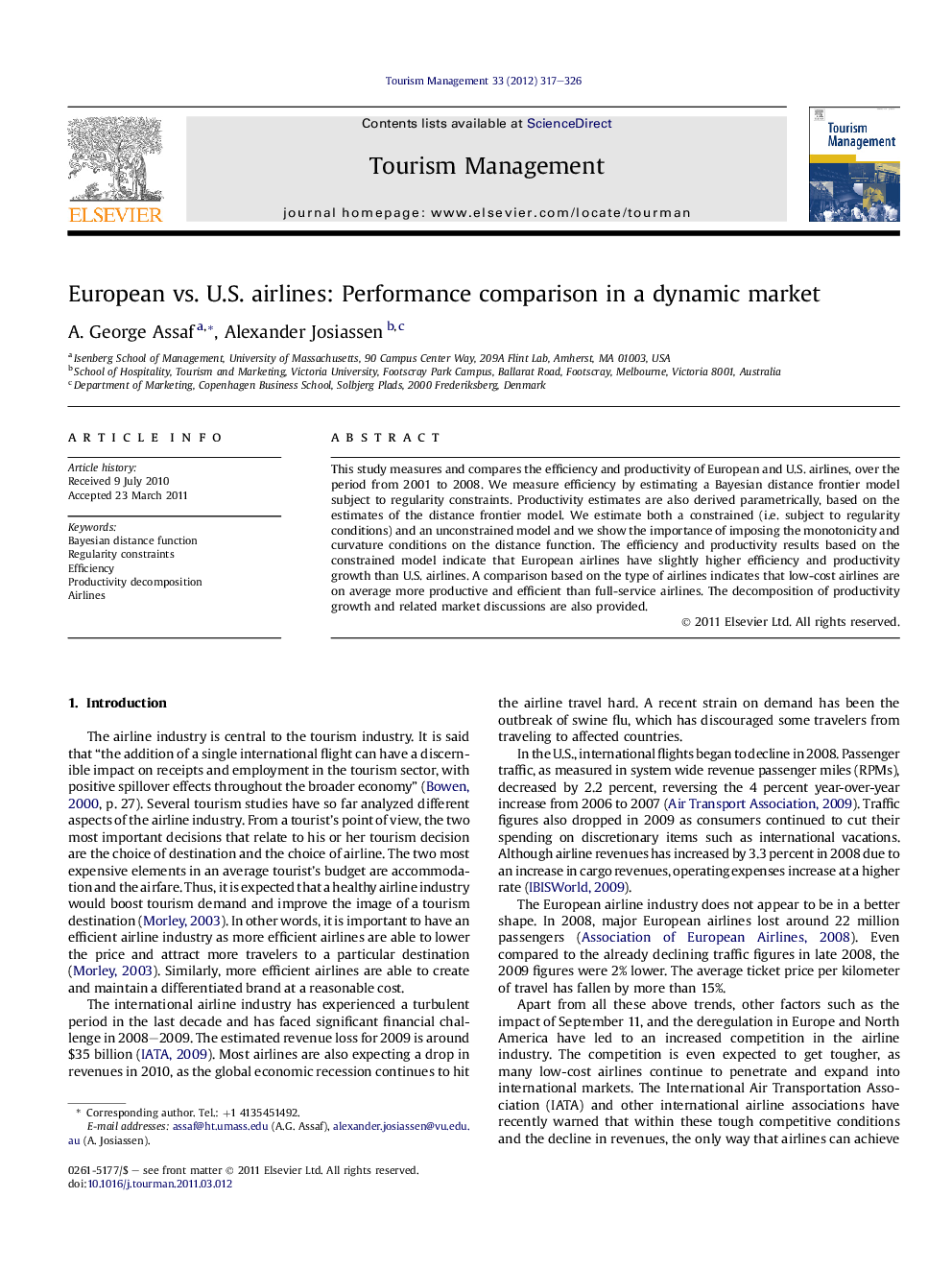| Article ID | Journal | Published Year | Pages | File Type |
|---|---|---|---|---|
| 1012344 | Tourism Management | 2012 | 10 Pages |
This study measures and compares the efficiency and productivity of European and U.S. airlines, over the period from 2001 to 2008. We measure efficiency by estimating a Bayesian distance frontier model subject to regularity constraints. Productivity estimates are also derived parametrically, based on the estimates of the distance frontier model. We estimate both a constrained (i.e. subject to regularity conditions) and an unconstrained model and we show the importance of imposing the monotonicity and curvature conditions on the distance function. The efficiency and productivity results based on the constrained model indicate that European airlines have slightly higher efficiency and productivity growth than U.S. airlines. A comparison based on the type of airlines indicates that low-cost airlines are on average more productive and efficient than full-service airlines. The decomposition of productivity growth and related market discussions are also provided.
